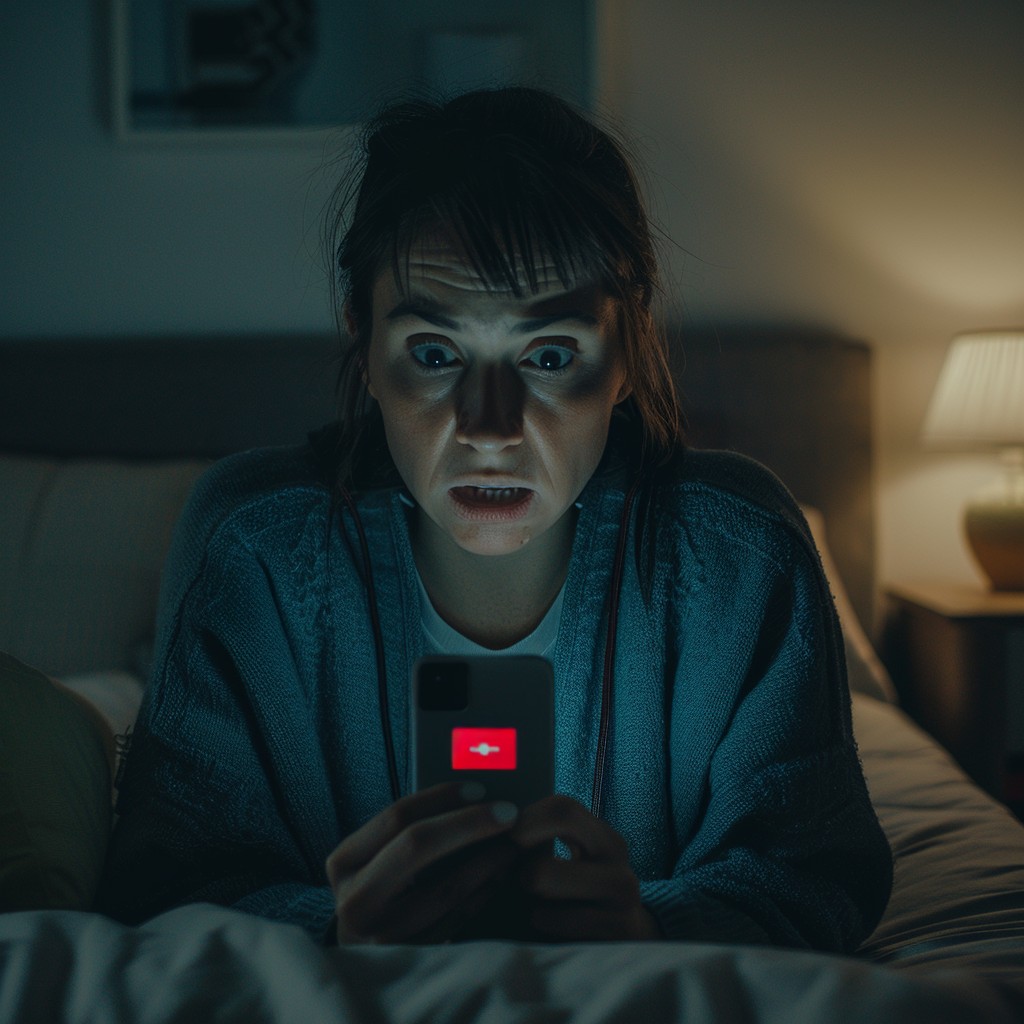Blue light exposure can be beneficial during the day as it promotes wakefulness, but it can also cause problems at night by suppressing melatonin, a hormone that helps regulate sleep. Blue light can increase mental stimulation, cognitive performance, and alertness, which can be advantageous for daytime activities that require focus. However, excessive blue light exposure can interfere with restful sleep by tricking your brain into staying alert for too long. This can make it difficult to fall asleep even when you’re tired.
To achieve high-quality sleep, it is essential to follow a consistent sleep schedule and calm your “busy brain” by engaging in a relaxing activity, such as reading a book or listening to soft music or other soothing sounds. Creating a dark environment can also help prepare your brain and body for sleep.
What Is Blue Light?
Blue light has the shortest wavelengths and highest energies in the visible light spectrum, accounting for about one-third of all visible light. The visible light spectrum consists of seven colours: red, orange, yellow, green, blue, indigo, and violet, each with different wavelengths and energy frequencies that affect your eyes differently.
Studies show that blue light with a wavelength between 415 and 455 nm is the most harmful due to its high energy and short waves, which can penetrate the cornea and be absorbed by the iris or pupil. Although the sun is the primary natural source of blue light, artificial sources, such as fluorescent lighting and screen-based technology—including televisions, computer monitors, smartphones, and tablets—are also common sources of blue light.
What You Need to Know About Blue Light and Sleep
Prolonged exposure to blue light can cause damage to your eyes and disrupt your ability to fall asleep and stay asleep, as the body’s natural sleep cycle is based on lightness and darkness. The light from the sun signals to the body that it’s time to be awake, while the darkness of night-time tells the body it’s time to sleep. Exposure to blue light before bedtime can confuse your body’s natural sleep cycle and suppress the secretion of melatonin, a hormone that keeps your circadian rhythm stable.
Sleep Deprivation Negatively Impacts Older Adults More
As people age, they may find it harder to fall asleep at night, maintain sleep, and enter into a deep sleep. This can lead to disrupted sleep patterns and poor sleep quality, which have been linked to chronic health conditions such as heart disease, kidney disease, high blood pressure, diabetes, stroke, and obesity. Additionally, decreased amounts of quality sleep can contribute to mental health problems, including depression, anxiety, and dementia. Since older adults are more susceptible to poor sleep, it is important to limit contributors such as blue light exposure as much as possible.
We Get Exposed to a Lot of Blue Light as We Age
Excessive exposure to blue light is commonly associated with technology use among younger individuals, who frequently use smartphones, tablets, or sit in front of computers. However, research shows that older adults actually receive more exposure to blue light than younger people for two reasons. Firstly, older adults tend to watch more television than younger adults, with those over 65 spending three times more of their waking hours watching TV. Secondly, older adults spend significantly more time at home and are exposed to more artificial light-emitting diode (LED) lighting that emits stimulating blue light.
Controlling Light Exposure for Better Sleep
Blue light exposure can be beneficial for promoting wakefulness, but it has its downsides. Excessive blue light can suppress melatonin, which is essential for quality sleep. It can also trick your brain into thinking it should stay awake for longer, making it difficult to get restful sleep. To achieve great sleep, you need a consistent sleep schedule and to switch off your busy brain. One way to calm your mind is to engage in a relaxing activity, such as reading a book or listening to soothing sounds in a dark environment.
Tips for Getting Better Sleep in Older Adulthood
- Consider using red light for night lights and general lighting at night. Red lighting has no stimulating effect on the circadian rhythm and is less likely to suppress melatonin production.
- Set a consistent bedtime to help optimise your sleep.
- Establish a relaxing bedtime routine, such as using aromatherapy, taking a warm bath or shower, or practising sound therapy.
- Limit your intake of sugar, caffeine, alcohol, and nicotine before bed.
- Engage in physical activity during the day to help your body relax at night. However, be mindful that stimulating physical activity close to bedtime can have the opposite effect and make it harder to fall asleep.
- If you don’t fall asleep within 20 minutes of going to bed and are feeling restless, try getting out of bed and engaging in a low-stimulation activity rather than just lying in bed. Reading, journal writing, and working on puzzles are good ways to help reduce sleep anxiety.
- Power down blue-light-emitting devices and overhead lights at least 2-3 hours before bedtime.










